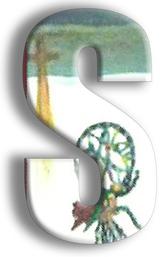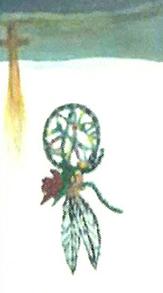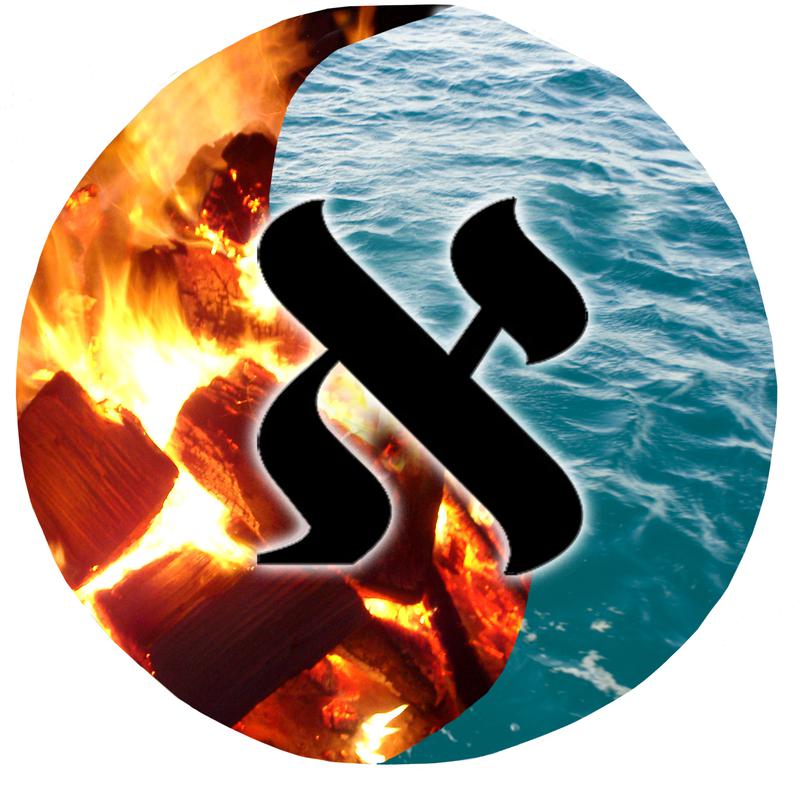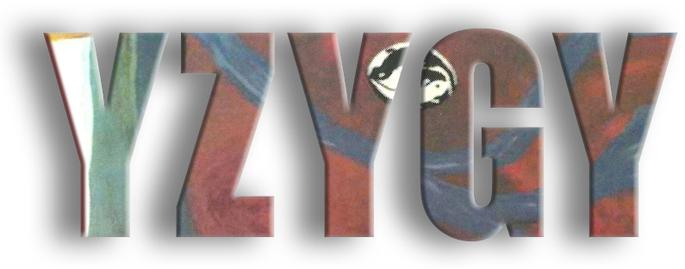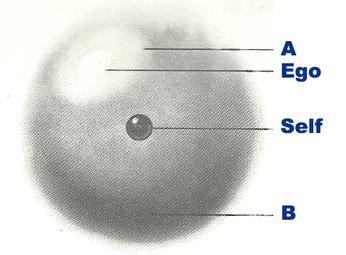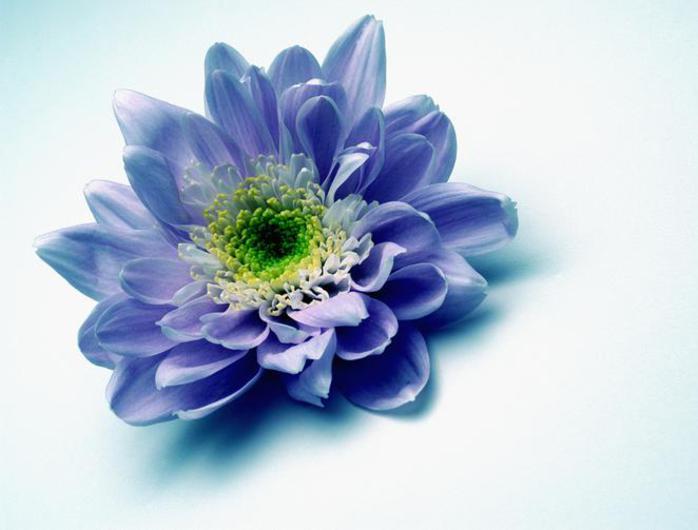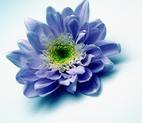MEMOIR LOGO CONCEPT: The aleph and a Sufi mystic inspired my creation and design of the syzygy logo, which I initially based on the symbolism of the yin and yang.
But the concept expanded when I first saw the aleph in Judith Cornell’s
Mandala Healing Kit, My inexplicable attraction to it led me to incorporate it into my logo before I knew what it meant.
I later read that the “Aleph (the first letter of the sacred Hebrew alphabet) embodies the primordial, divine potential of the universe. ... Aleph contains all the universe’s potential and all of its emptiness simultaneously. Aleph represents a dynamic process of movement from unity to diversity and back to unity,” Jennifer Judelsohn, Songs of Creation.
And the mystic poet Rumi inspired me to use the fire and water concept after I read The Question. Here is an excerpt:
“The presence is there in front of me. A fire on the left, a lovely stream on the right.
One group walks toward the fire, into the fire. Another toward the sweet flowing water.
No one knows which are blessed and which are not.
Whoever walks into the fire appears suddenly in the stream.
A head goes under water, and that head pokes out of the fire.”
LOGO ART: Cropped fire and water images from Free Images.
LOTUS LOGO: In spiritual and religious literature, “the lotus is a symbol for the macrocosm and the microcosm, the universe and man. The lotus represents the divinity of the cosmos as well as the divinity of man.
The lotus is the center of the infinite, omnipresent consciousness which connects with the consciousness of the universe. Through the intuition, one of man’s divine gifts, the spiritual student can see the infinite, omnipresent consciousness as the lotus flower within himself.”
LOTUS ART: Courtesy
Homestead, my website service provider. (Temporary art while I design of my own lotus logo.)
TO DOWNLOAD FREE SAMPLE CHAPTER OF SYZYGY:
THE MEMOIR
TO BUY MEMOIR
(Thru Amazon)
THE MEMOIR
CROSSING THE BRIDGE TO SELF
THE WEBSITE
THE MEMOIR
NEW!
Jung observed patterns of individuation—a continuous cyclical process of self-awareness and transformation—in his extensive studies of mythology, philosophy, sociology, Gnosticism, Eastern and Western religions, as well as later in his extensive travels and lengthy stays among remote, indigenous cultures who had not yet paid the price, that is, who had not yet experienced a “loss of soul,” which occurs during the process of becoming “civilized.”
Add to that, after perusing the bulk of work produced through the ages on the occult and analyzing thousands of dreams—despite his desire to be known first as a scientist—Jung was intrigued by how the progression of dreams and the tenets of alchemy, astrology, the I Ching, numerology, and the tarot all mirror the individuation process, that is, in broader terms, the evolution of the human psyche.
Later Jung developed what he called the “Constellation Theory,” which suggested that, given a particular traumatic experience, such as the loss of a job or a home or a loved one, several modes of communication might converge to convey a message from the psyche to help the ego muster through.
With these seeds taking root in his consciousness, and perhaps through his own process of individuation, Jung came to consider spiritual development vital to one’s psychological health and essential to the enjoyment of a meaningful life, to the point that he (subtly) encouraged patients who suffered with depression or addiction to return to their religious roots.
It seems Jung’s religious outlook and his theory of the collective unconscious, not to mention his de-emphasis on the libido, resulted in a painful but necessary split between him and his mentor and friend, Sigmund Freud. Freud, an atheist, viewed religion as an illusion to keep the masses content and in check, and he insisted every sharp object in a dream represented a penis. (I would have said, careful, or you’ll poke your eye out.) But Jung speculated that even an actual penis in a dream may symbolize something else, for example, power or creativity. Perhaps the last thorn in Freud’s side was Jung’s postulation that primordial images, which he termed “archetypes,” are imprinted on our unconscious, that is, experiences and knowledge common to us as a species are passed like instincts from ancient to modern times.
In addition to his theory of the unconscious—and based primarily on his clinical observations (as critics are quick to point out)—Jung developed a theory of personality types in an effort to help us better understand ourselves and one another, which is the basis of the Myers-Briggs test, a test used by corporations and individuals to build better professional and familial interpersonal relationships.
He also coined the term “synchronicity”—what I like to think of as the Universe’s shorthand (although I have yet to fully develop a corresponding analogy
The psyche can be compared to a sphere with a bright field (A) on its surface representing consciousness. The ego is the field’s center (only if “I” know a thing is it conscious). The Self is at once the nucleus and the whole sphere (B); its internal regulating processes produce dreams (Jung’s Man and His Symbols, p. 161).
NOTE: It was as if I saw a ghost the first time I saw the above diagram in 1990, which looked like a snapshot of my soul, which I could see in my mind’s eye as a child.
Extensive studies led Jung to develop new psychology
to see if it pans out)—oh, yeah, synchronicities, meaningful but acausal connections between internal and external events, which Jung believed, in turn, activated the so-called archetypes in an individual’s unconscious.
And then later, when the techniques he used to analyze his patients’ dreams were inadequate to explain his own complicated dreams, Jung decided to address his dream images directly using a technique that was probably used by cavemen and cavewomen but which he coined “active imagination,” a technique considered by many as the most powerful psychoanalytical tool at your disposal, a technique that enables you to re-enter a dream or a fantasy and to initiate a dialogue between your ego and your psyche, a technique that demands caution and respect.
All of the foregoing thoughts, theories, tools, and techniques laid the foundation to what Jung would later term “analytical psychology.” One the greatest thinkers and prolific writers of the 20th century, Jung has contributed tomes that will surely be analyzed for ages to come. For now, on this website, I scratch the surface of his genius with introductions to some of his thoughts on many practices that have been gaining in popularity in recent years, for example, astrology and the I Ching. I hope you will find at least a few of the following tools interesting and beneficial as you explore the possibilities on your path of individuation.
♂ ♀
© 1955–2019 Syzygy: Crossing the Bridge to Self. All Rights Reserved.
